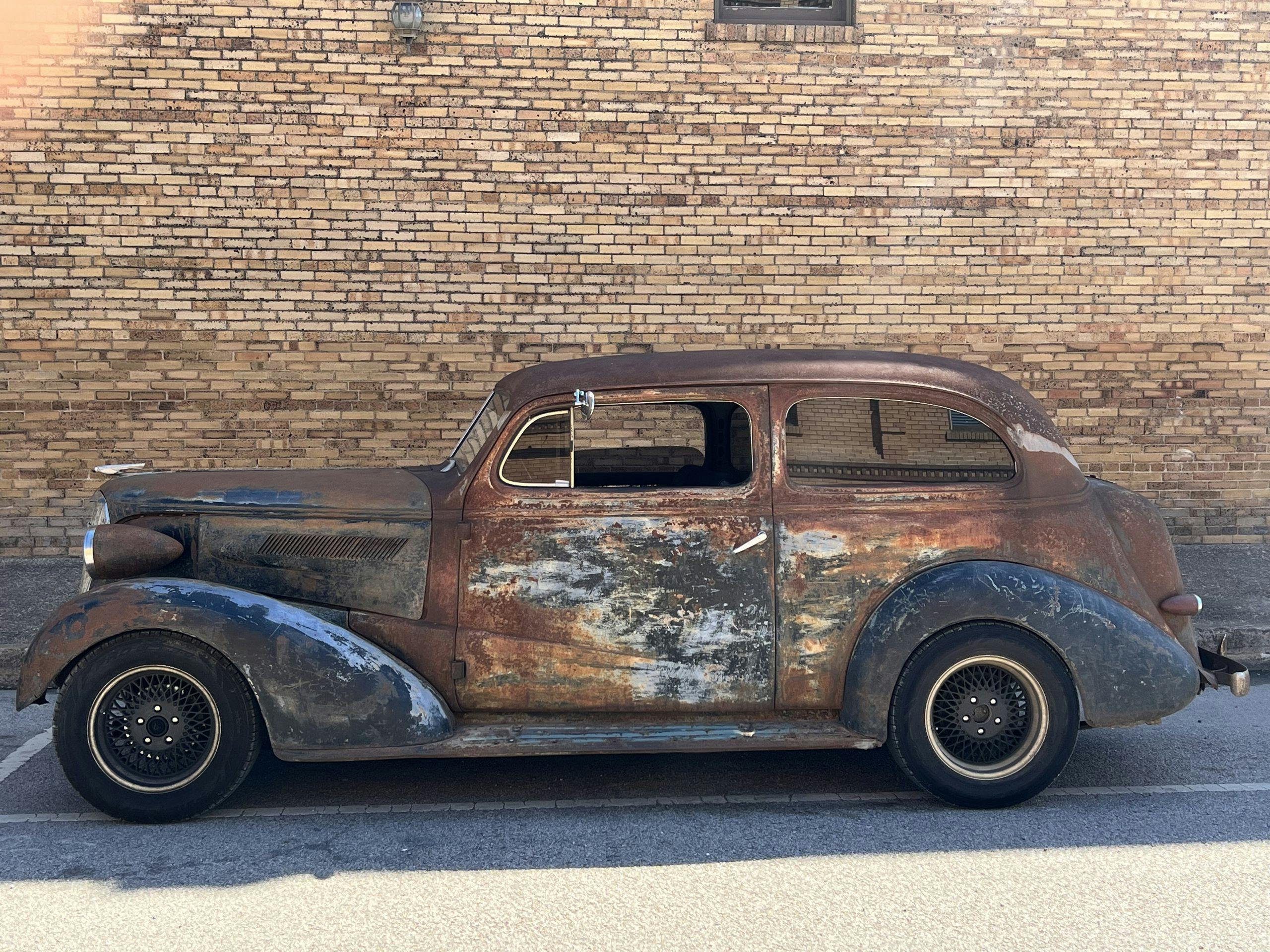Rust never sleeps: Investigating a pinball wizard’s 1937 Chevrolet
According to Neil Young, rust never sleeps. The Canadian-American singer songwriter coined the phrase as a personal rebuke. The former folk rocker was telling himself he had to adapt his style to the music scene—specifically punk rock—or become irrelevant. Wait. Neil who? Point taken? More to the point, why would a supremely capable car guy build a functional automobile out of a rusted out hulk? A vehicle called a “derelict” or, according to its maker, a “rust-o-mod.”

Let’s not kid ourselves; money was a factor. Billy bought the rusted remains of a ’37 Chevrolet Master two-door sedan—busy becoming one with a field outside of The Circuit of the Americas—for $500. He spent $1500 on a 1999 Yukon (Vortec 350 engine, transmission and computer) to make it run. Save a few interior bits and pieces from eBay, that’s about it. The real expense? A year of Sundays. As Billy doesn’t charge himself for his labor, his ’37 “rust-o-mod” was a cheap and cheerful way to create an automobile that looks like nothing so much as a dead car driving.

If anyone can bring a car back from the dead, it’s Billy. I met my main man at Pinballz, servicing over 250 different pinball machines. The not-so-tall-Texan’s house could be mistaken for a hoarder’s hangout. It’s filled to the rafters with pinball machines, model rockets, model airplanes, a model racing track (that descends from the ceiling), a squirrel and enough tools to build, modify or fix anything short of a nuclear reactor. In fact, Billy is an American icon: an astoundingly capable shade tree mechanic.
Plaudits aside, the question remains: why a rust-o-mod? Billy turned his back on rat rods (cars cobbled together from junkyard parts), hot rods (vintage cars modified for high speed), resto-mods (vintage cars modified with modern parts for drivability), high risers (American sedans with large diameter wheels and high ground clearance, including donks, boxes and bubbles), low-riders, pro street (stock car-style daily drivers) and drift cars. “It’s all about the patina,” Billy says. “Rust makes it timeless . . . It already is what other cars will someday be.”
If you can—or can’t—get past the corrosion, Billy’s rust-o-mod retains all the exterior charm of the original. The body was designed by Jules Agramonte, famous for his “I’ll just leave the drawing here for GM Design Chief Harley Earl to discover” 1934 LaSalle (an ill-fated brand built by Cadillac between the Wars). Ironically enough, the ’37 Chevy was marketed as “the complete car, completely new.” True story! Chevrolet hadn’t launched a new car in eight years.
Mr. Earl was particularly proud of the ’37 Chevy’s “Diamond Crown Speedline,” the crease between the engine and the front fender, extending to the front door. And wooden’t you know it, the ’37 was Chevy’s first all-steel automobile! With safety glass! An optional heater! Chevrolet sold 478,977 two-door Town sedans for $675 sans options ($13,422.23 in today’s money).
You can buy a more-or-less fully restored 1937 two-door Chevrolet sedan—new internals, painted exterior—for about $42K. That’s not what the cool kids buy. The suicide door-equipped Chevrolet Master Deluxe four-door and the two-door Art Deco fabulous swoopy coupe are the money move. (The coupe is worth three times as much as the sedans.)
All of which still leaves us wondering about the appeal of an inauthentically motivated rusted out old car with a hodgepodge interior. I reckon the bottom line is the same when contemplating certain preferences in relationships: if you don’t understand it, it’s not for you. There is, however, some logic to the genre. Here’s how David Visaggi of Rubber Meets The Road puts it: “Unlike most classic cars, which many of us want to treat like fine wine—not too much sun, just the right temperature, handle with care, etc., these cars are meant to be driven. Some buyers drive them daily! Since the cars have patina, fear of a minor scratch or ding will not keep them from driving or parking their car just about anywhere. So they get to have fun without all the stress!”

I have a different take. Billy’s rust-o-mod is like those abandoned industrial buildings containing enormous obsolete machinery—unloved structures too massive to tear down. It’s a stark reminder of the American middle-class’ glory days. And just like those devolving architectural relics, Billy’s ’37 rust-o-mod tells us that the thrill of the “completely new” automobile is a mirage. Neil nailed it: Rust never sleeps. And when we take the big sleep, we’ll leave rusting reminders of our mortality. An AMG GTC rust-o-mod? Have fun with that.








